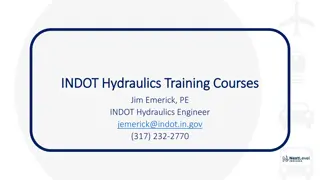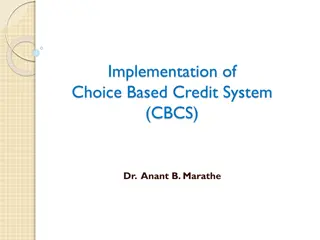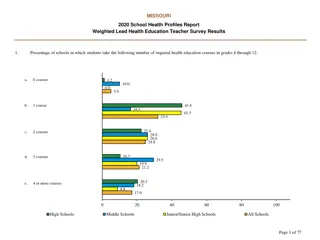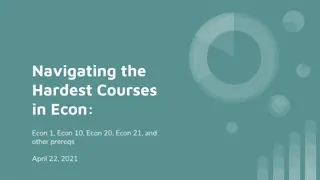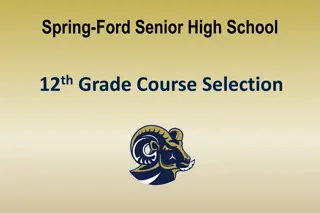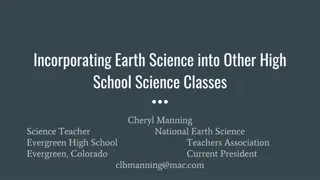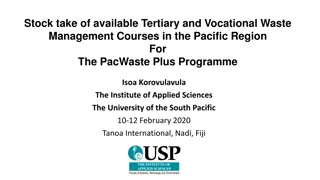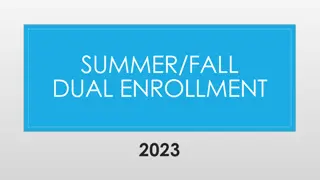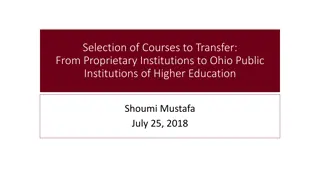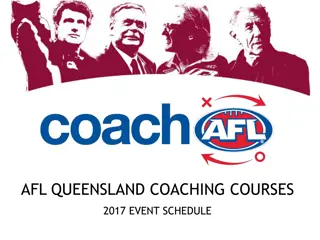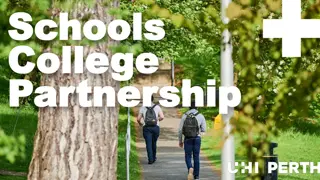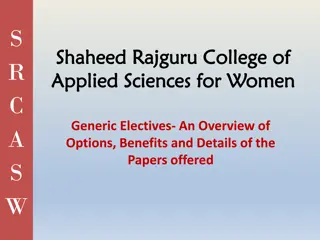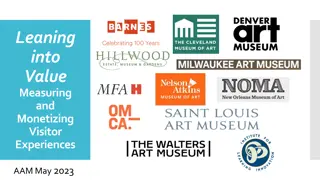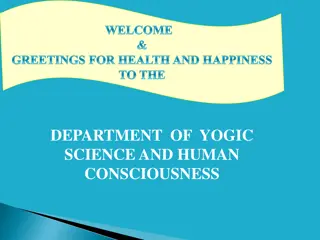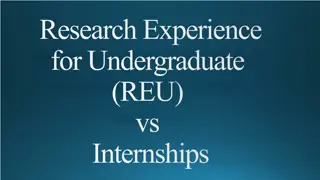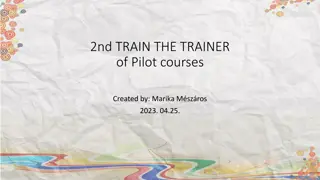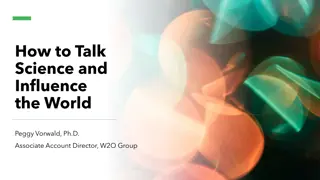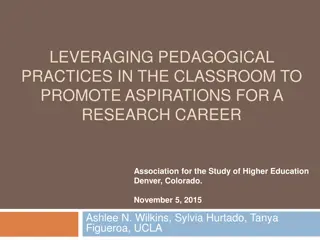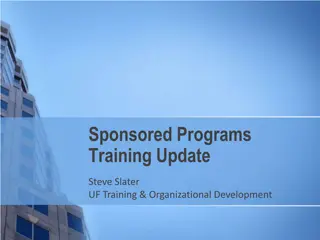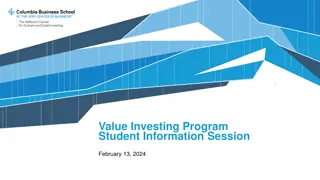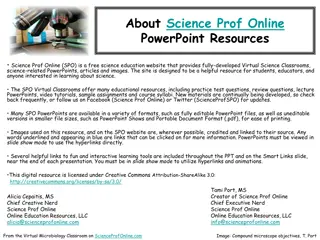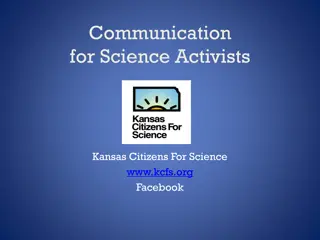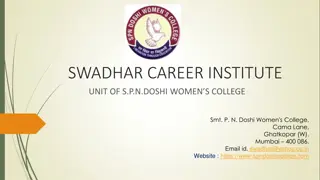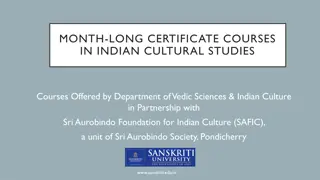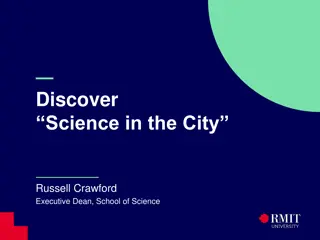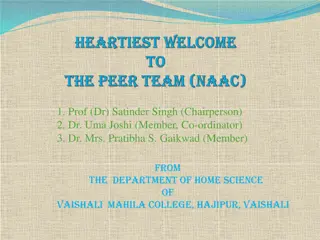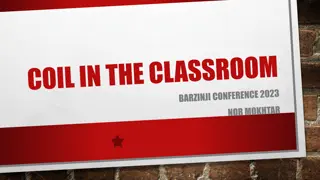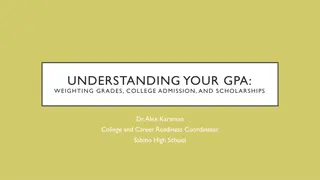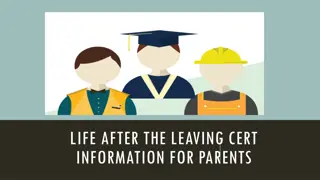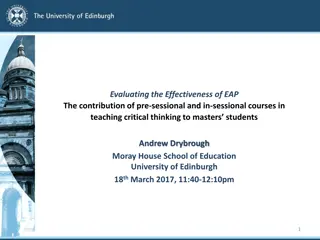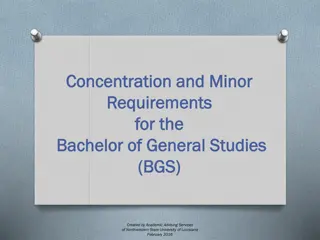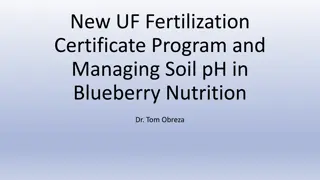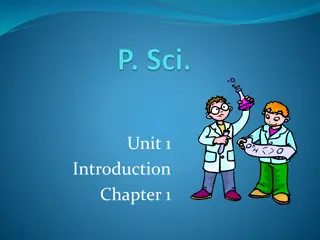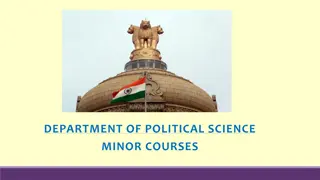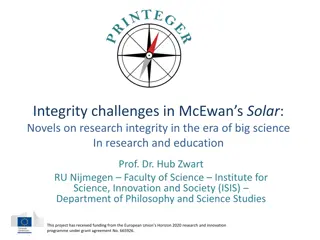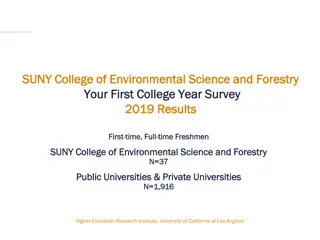Exploring Research-Like Experiences in Science Courses
The content delves into research-like experiences in science courses, focusing on findings from the CURE Survey conducted by David Lopatto in June 2014. It highlights the distinction between known knowns, known unknowns, and unknown unknowns in research and inquiry-based learning. Additionally, it covers strategic goals of undergraduate science programs, the CURE survey methodology, and the diverse student participation in CURE programs across various institutions. The discussion also includes different course elements in the CURE approach, emphasizing student involvement in research processes.
Download Presentation

Please find below an Image/Link to download the presentation.
The content on the website is provided AS IS for your information and personal use only. It may not be sold, licensed, or shared on other websites without obtaining consent from the author. Download presentation by click this link. If you encounter any issues during the download, it is possible that the publisher has removed the file from their server.
E N D
Presentation Transcript
Research-like Experiences in Science Courses Findings from the CURE Survey David Lopatto June 25, 2014
There are known knowns. These are things we know that we know. There are known unknowns. That is to say, there are things that we know we don't know. But there are also unknown unknowns. There are things we don't know we don't know. Donald Rumsfeld The only fundamental difference between research and inquiry-based learning is the prior state of knowledge of the broader community. In research it is unknown by all; in inquiry it is only unknown to the learner. Fortenberry, N.L. (1998). Integration of research and curriculum. Council on Undergraduate Research Quarterly, 19, 54-61
Strategic goals of an undergraduate science program The Bold Program - Develop scientists The Humble Program - Scientifically literate citizens; General benefit of exercising critical thinking. At a recent HHMI meeting, presenters argued that the key to success in recruiting students to STEM careers included: Persistence Professional Identity Learning
The CURE (Classroom Undergraduate Research Experience) survey Employs some of the items from the SURE. It comes in three parts. For the academic year 2011-2012 the CURE survey yielded 4594 pre- course surveys and 6001 post-course surveys.
Who takes the CURE? Augustana Austin Beloit Butler Calvin Lawrence Lewis & Clark MIT NC State Yale Wellesley Holy Cross Duke Emory Gettysburg Haverford Northern IL St Johns St Olaf Stillman Stony Brook Wash U in St. Louis Willamette Grinnell All Others 95% U Arizona U Alabama UCLA U Pittsburgh U Rochester and so on
Course Element A scripted lab or project in which the students know the expected outcome. A lab or project in which only the instructor knows the outcome. A lab or project where no one knows the outcome. At least one project that is assigned and structured by the instructor. A project in which the students have some input into the research process and/or what is being studied. A project entirely of student's own design. Students work individually. Students work together as a whole class. Students work in small groups. Students become responsible for a part of the project. Students read primary scientific literature. Students write a research proposal. Emphasis Part 1 of the course elements for the CURE. David Lopatto Grinnell College
Students collect data. Students analyze data. Students present results orally. Students present results in written papers or reports. Students present posters. Students critique the work of other students. Students listen to lectures. Students read a textbook. Students work on problem sets. Students take tests in class. Students discuss reading materials in class. Students maintain lab notebooks. Students learn computer modeling. Part 2 of the course elements for the CURE . David Lopatto Grinnell College
At the beginning of the term, faculty members look at a one-page list of course elements. They indicate numerically the emphasis placed on certain activities. From these numbers we get high versus low research-like courses. The key items are The course had a lab or project where no one knows the outcome. The course had a project in which students have some input into the research process. The course had a project entirely of student design. The students became responsible for a part of the project. The students critiqued the work of other students.
1 2 3 4 Understanding the research process in your field Readiness for more demanding research Understanding how scientists work on real problems Learning lab techniques Tolerance for obstacles Ability to analyze data Skill in the interpretation of results Understanding how knowledge is constructed Learning to work independently Ability to integrate theory and practice Becoming part of a learning community Understanding that scientific assertions require evidence Understanding science Ability to read and understand primary literature Understanding how scientists think Self-confidence Clarification of a career path Skill in effective oral presentation Confidence in potential as a science teacher Learning ethical conduct Skill in science writing
5 High Low 4 Mean gain 3 2 Tolerance for obstacles faced in the res... Clarification of career path Ability to integrate theory and practice Ability to analyze data and other information Skill in how to give an effective oral prese... Skill in scientific writing Learning to work independently Self-confidence Understanding of the research process i... Understanding how knowledge is constr... Readiness for more demanding research Skill in interpretation of results Understanding how scientists work on re.. Understanding that scientific assertions ... Ability to read and understand primary lit... Understanding science Learning ethical conduct in this field Learning laboratory techniques Understanding how scientists think Becoming part of a learning community Confidence in my potential to be a teache... Comparative mean gains reported by students on the CURE survey from courses that had a high research-like component versus courses that had a low research-like component.
5.00 1. Research process 2. Knowledge construction 3. Readiness for research 4. Tolerance for obstacles 5. Interpret results 6. Clarify career 7. Integrate theory 8. Real problems 9. Assertions need evidence 10. Analyze data 11. Primary literature 12. Understand science 13. Ethical conduct 14. Lab techniques 15. Oral presentations 16. Self-confidence 17. Science writing 18. How scientists think 19. Independence 20. Learning community 21. Teaching potential UIUC SURE CURE 4.50 Mean Learning Gains 4.00 3.50 3.00 2.50 2.00 1 2 3 4 5 6 7 8 9 10 11 12 13 14 15 16 17 18 19 20 21 Depiction of results similar to those appearing in Denofrio, Russell, Lopatto, and Lu (Science, 2007). The University of Illinois project attempted to enhance student performance by linking student interests to chemistry and biology through CBEL (The Chemistry and Biology of Everyday Life). Comparison data are from 2006.
5.00 GEP Summer Research Courses Without Research 4.50 Mean learning gains 4.00 3.50 3.00 2.50 Lopatto, D., et al. (2008). Genomics Education Partnership. Science, 322, 684-685.
SEA phage genomics SEA comparison 5.00 Low research-like courses High research-like courses 4.50 Mean learning gains 4.00 3.50 3.00 2.50 First-Year College Students Engaged in Research: The Impact of the SEA-PHAGES Course (Jordan, et al. 2014)
The plan for a research-like experience will depend on the goals you set for the course and broader outcome.



